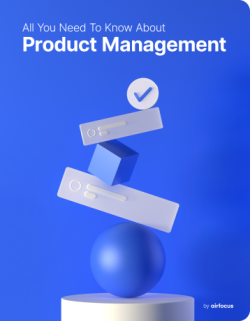Product Development Lifecycle
What is a product development lifecycle?
Product development lifecycle definition
The product development lifecycle refers to the phases of development that a product goes through. While its definition can be altered slightly depending on a particular business's approach to product development, the product development lifecycle generally begins with the development of a product, progresses through the launch and maturity of that product, and ends when the product's usefulness and popularity decline.
At the end of the development lifecycle, a product is typically withdrawn from the market. One of the goals of understanding this lifecycle is to keep this final step of the lifecycle as far off in the future as possible.
What are the 5 stages of a product lifecycle?
Market development
The first of the five stages of the product development lifecycle is market development. During this first phase, the product development team will be conceptualizing and creating the product.
A key aspect of this first step is to perform market research. This ensures higher levels of success as you move further along the product's lifecycle.
Market introduction
Next, the product will be introduced to the market. This is also known as a "product launch". This is generally where marketing for your product is most important.
Your marketing team needs to build as much brand awareness as possible at this stage, getting potential customers excited about your product. This is also a time to make sure that everything about your product is working as intended.
Market growth
As your product begins to grow and succeed, it'll enter its phase of market growth. This is where the market begins to embrace your product. As a result, your customer base and reputation begin to grow as well.
In the earlier stages of the product development lifecycle, your goal is just to get attention from consumers. Now, you need to not only keep that attention but position it competitively. What sets your product apart from the competition and why is your product still worth investing in?
Market maturity
The fourth phase of the product development lifecycle is where things will start to feel more comfortable. You've carved out your space in the marketplace, have "made it" alongside your competitors, and have reached a point where growth is leveling off without dropping.
To stay in this position, you'll most likely need to lower the cost of your product and make ongoing improvements.
Market decline
The last stage of the product development lifecycle is market decline. This is where your product moves from a point of stability into a state of decline. Your product is either no longer favored by the market, has too many competitors, has become irrelevant, suffered from a damaged brand image, or simply lost customer interest.
Product development lifecycle examples
Music players
The music player industry is a great example of how products can burst onto the scene and then disappear. Record players allowed people to play music in their homes, were very popular, and then began to fade out as tape players became the norm. These were eventually replaced by CD players, then MP3 players, and eventually music streaming services took over.
Smartphones
Smartphones, on the other hand, are an example of a device that has managed to successfully stretch out the product development lifecycle for as long as possible. By continually updating, innovating, and releasing new smartphones, the industry can prolong being replaced by a newer innovation.
General FAQ

Glossary categories
Experience the new way of doing product management

Experience the new way of doing product management








